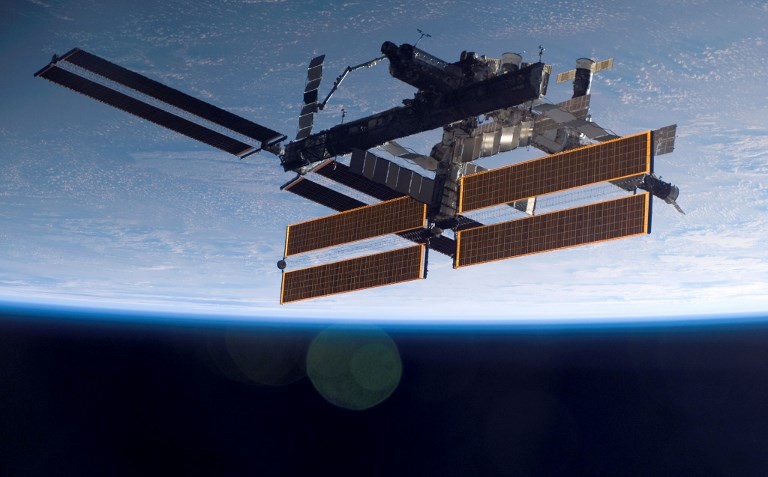Popular Reads
Top Results
Can't find what you're looking for?
View all search resultsPopular Reads
Top Results
Can't find what you're looking for?
View all search resultsSuper-computer brings 'cloud' to astronauts in space
A super-computer at the International Space Station aims to bring "cloud" computing to astronauts in space and speed up their ability to run data analysis in orbit.
Change text size
Gift Premium Articles
to Anyone
A
super-computer at the International Space Station aims to bring "cloud" computing to astronauts in space and speed up their ability to run data analysis in orbit, Hewlett-Packard Enterprise said Thursday.
A SpaceX cargo capsule delivered the equipment, known as The Spaceborne Computer, to the space station in August 2017.
After more than a year of tests, HPE says it is ready to bring the cloud experience to astronauts for the first time -- a kind of "cloud" above the clouds, as it were.
"We've completed all the requirements of our original one-year agreement. It's been successful and we can open it up," HPE technology officer Mark Fernandez told AFP.
A super-computer is essentially a group of computers that work together.
The one on the ISS contains 32 "cores" and is similar to the kind HPE sells on Earth. It is 30 to 100 times faster than an iPhone or tablet, Fernandez said.
NASA needed to know that any super computer it purchased would be able to function in the harsh environment of space, amid microgravity, radiation and occasional power outages. The HPE product stood up to all the tests.
The goal is for astronauts to be able to run their scientific analysis in space, without transmitting the data to Earth first.
Read also: NASA astronauts install high-def cameras during spacewalk
Currently, the connection between space and the Earth can be slow and unreliable. The connection is often lost, and there may be a gap in communication lasting several seconds or more.
Fernandez said the new computer aims to upgrade the experience -- currently a bit like relying on an old, dial-up modem.
"It is slow, it is intermittent and it has high latency," he said.
With the new system, "I'll have lower latency to move my data, I'll have higher bandwidth to move my data. I won't have any loss of signal to get my data down to Earth, and I'll be much more reliable."
On a future journey to Mars, millions of miles away, communication delays could last 20 minutes or more.
So testing such super computers in space, at a relatively close distance of 250 miles (400 kilometers) above the Earth, could help develop future deep space computers.
The Spaceborne Computer will be tested by scientists for just a few months, then sent back to Earth in February or March.











